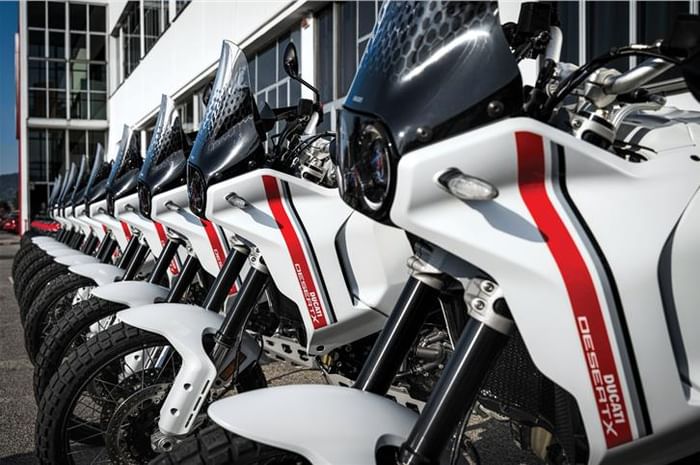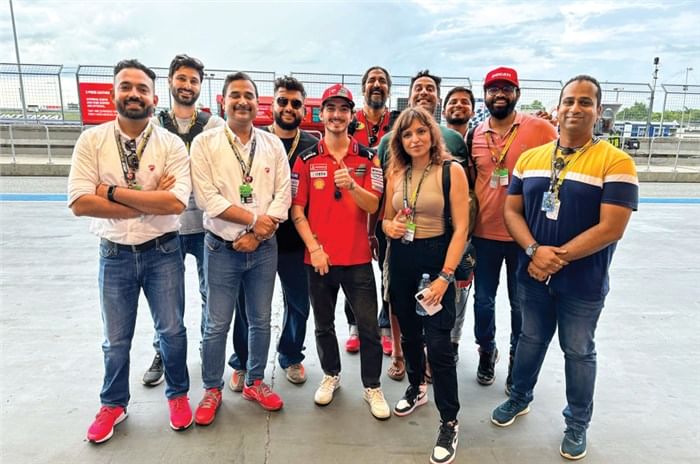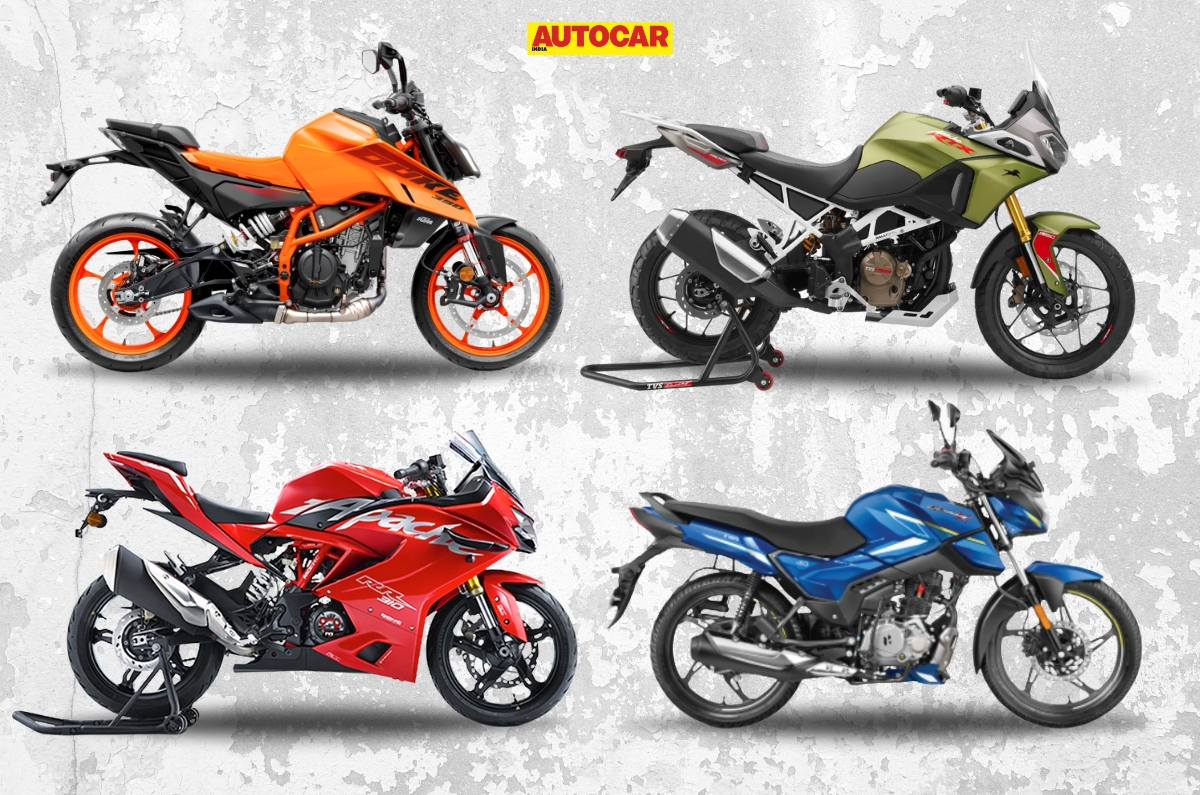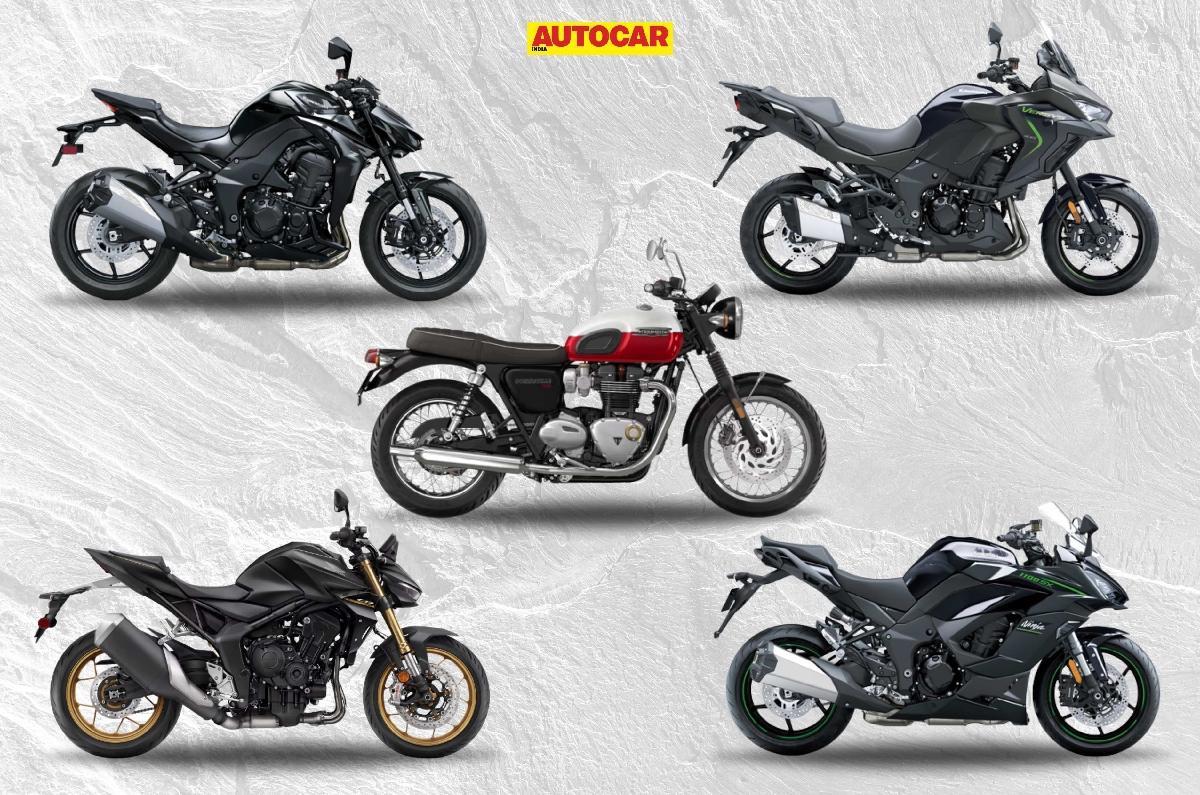Ducati prices have steadily been on the rise. How have customers taken to this?
Marco Biondi (MB): Our returns have reduced, but that’s mostly been down to price increases in the supply chain and logistical challenges. Customers are accepting our prices really well, and the dealers are pointing this out. Price increases are not something super positive, but for now, we don’t see this reflected in our orders, in fact, it is still growing. Last year we grew and this year also the order intake is positive. We see that customers appreciate our products and are therefore happy to pay the premium price.
The DesertX has been sold out already for India?
MB: Yes, it has. Maybe we have underestimated the success of the bike a little, but all the units allocated to India already have a customer’s order behind them. I am trying hard to increase the production for India, so we can deliver more by the end of the year.
And how many units would that be?
MB: It is around fifty units for India.

There must be pressure for more affordable Ducatis. Is EV the way forward?
MB: Could be, it depends on how this technology develops. We believe that there will be a market for 35kW (47.5hp) electric bikes and even for 11kW (15hp) electric vehicle bikes. It all depends on how quickly the battery density gets higher. For now, you know we are involved in MotoE, so we learn a lot about this kind of technology, bcause for now what we produce for the teams racing in MotoE is simply not for an end customer and is not affordable.
Once we look at the 35kW or 11KW, we always want to maintain our premium positioning. By that, I don't mean that we will only produce high-end products, and for sure we will look somewhere in the mid range as well. Today, the technology is simply not there. Bikes need to be light and they need to have a 250km range, otherwise, it doesn’t make sense. We have it in the plans, but if and when this happens is not clear yet.
Has our tough environment helped in developing Ducatis in Italy?
MB: In the past, we did have some issues with certain models regarding sand and dust, which we don’t experience in other countries. But in the last three years, it has become much less if not stopped entirely. Yes, I can confirm that we have had learnings from India, and I think, thanks to that, the new products we have developed don’t show these kinds of specific issues.
Bipul Chandra (BC): Yes, in the past there were some issues with the tough environment here, but I would say that our products are now far more acceptable and the tolerance level is pretty high for various situations. Even the components are coming with far more tolerance, so I think the learning has been accepted by the Ducati Motor Holding R&D team, and that is to be seen on the product side now.

Ducati’s image of quality has also improved significantly in the last few years…
BP: Yes, your point is very valid because in the past couple of years, the quality has really gone several notches up. So that plays a role.
MB: We measure our quality with a lot of attention. We are looking at different systems and our quality has increased very rapidly, so we are very happy. Now the challenge is to keep it that way because we have invested a lot, but this is what our customers expect. We are still not 100 percent satisfied, because you want to further increase, but this was possible thanks to our colleagues from Volkswagen Group and Audi directly. They have a lot of attention to quality and this helped us increase this rapidly.
I think it’s very important to say that our bikes have become much more rideable in these warm climates. I live here in Thailand where bikes can become very hot, but now, with the new technologies – as you’ve seen in the Multistrada with rear cylinder deactivation – if you ride in the city, this produces much less heat. This will also be the case for the Diavel and the Panigale.
Which is your bestselling motorcycles in India?
BC: The Scrambler without any doubt is the single largest selling model for us. The good point is that we have a balance of the other models like the Monster, Panigale and Multistrada, and they all sell in good numbers. That’s good for us brand wise because we have high-end models and also volume and value models selling, because of the more affordable Scrambler.

What is the plan for the customer experience beyond the motorcycle?
MB: We see our brand is not something to just sell motorbikes, we also sell a lifestyle. We want to entertain a customer and bridge their lives with exciting experiences. We have on-track and off-road experiences in Thailand and at Phillip Island in Australia, and we do offer this to our customers. In India, we do have some off-track experiences in Spiti and in Arunachal Pradesh so there are some cool adventures that we offer to our customers. We will also look more into racing and in giving some gentlemen or amateur racing experiences to our customers.

Where is India positioned in the markets that you manage?
MB: This is the hot debate I have with the CEO where he keeps asking me when India will finally become the number one market in the region, because we see in the car market that growth has been rapid. We have a lot of expectations that the Indian market will continue to grow. Right now I look after 16 countries, of which three are direct markets and the rest are importer markets. Out of the importer markets India is already number two, with South Korea leading for now. India is more or less right at the level of Thailand for now. And we expect that India should soon be a bigger market in South Korea, so I expect that in the next two years, we should reach volumes that make us very happy.
Now that freight prices have stabilised and availability has become better will we see a correction in Ducati prices in India?
BC: Freight prices have stabilised rather than going down. Prices are not coming down, but the good news is that they’re not going up either. That is a positive thing, however, the availability of containers is still a challenge because the number of ships coming to India is still far and few between so the number of containers available for India is still very constrained. At this moment, what we foresee is that we will try to maintain the prices that we have, but a downward trend may not be seen.
MB: What I can add here is that it is always difficult to expect plant quantities, as you can see in the case of the DesertX or the Diavel. But our advantage is that we have only three direct markets in Asia – India, China and Australia. But as we supply them directly from Thailand we have some flexibility, so India has some advantages in that if Bipul asks for more bikes we can try everything we can to produce them on a short term in order to serve the Indian customers better.
What are Ducati’s plans for Asia?
MB: We are just about to invest a lot of money here in Asia, especially here in the Thailand plant. Thanks to India and other countries, we have now come to the limit of the capacity at the plant. So this has made us invest in a brand-new plant. We set the first cornerstone two weeks from now and we’ll be ready on January 1, 2024. So we see us growing from a capacity today of about 13,000-14,000 bikes per year to up to 35,000 bikes. We expect a lot from the whole region, including India.
Will Thailand be the only point of manufacture in Asia for the foreseeable future?
MB: We have a growing number of suppliers from India so we see a big improvement in high-quality suppliers and we will look even more into it. For now, Thailand will be the only manufacturing point and we don’t even have anything in China. For now, it is not justified, but it depends on how quickly the India team develops the sales. If we reach about 3,000 bikes a year, why not, we may think about it again.

























